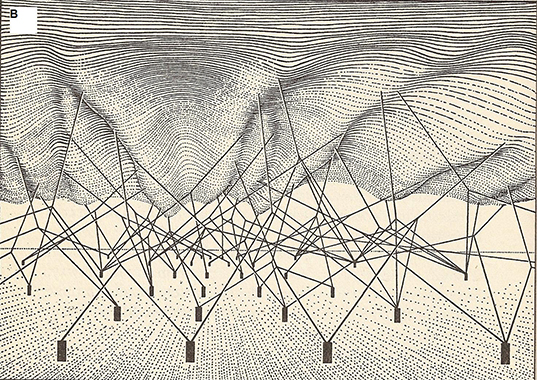
This past century has been marked by many architectural theories that exercised a vision on the intricate relation between the form and its associated affect. This search toward guiding principles for an architecture that is responsive to human perception has created a perennial obsession for bridging principles regarding the natural phenomena and the design of human environments. With the development of information theories and related technologies in the postwar period, the notion of architectural performance got inherently associated to the ability for a given system to exchange information with its environment. The role of information as a regulating force in the relation between form and performance prompted the emergence of critical practices in the spheres of art and design. Most importantly, the interdisciplinary development of cybernetics and its focus on the nature of communication between animals and machines, organic and non-organic systems, conveyed a new status to the architectural object. The form was indeed no longer considered as a fixed entity but instead turned into a reactive system, a sort of semi- organic machine that would behave as a living organism.
For the American mathematician Norbert Wiener, “Cybernetics takes the view that the structure of the machine or of the organism is an index of the performance that may be expected from it. In other words, the way information is organized, dispersed and translated regulates the performative aspects of an organism in regards to its environment. The perception of nature in terms of information assets’ had great consequences in many domains of human research including architecture. Ahead from the full-fledging “informatization of the real, architects conducted a multitude of design experiments built on the newly discovered potentials of responsive, automated and computational tools. The proliferation of such experiments led to the emergence of two prominent critical projects regarding the notion of architectural performance; respectively the morphogenetic and atmospheric projects. What matters here is the fact that both projects are to be found again at the forefront of the architect’s anxiety to fuse the architectural object with its environment. Their resurgence questions the intricate relation between the notions of form and performance.